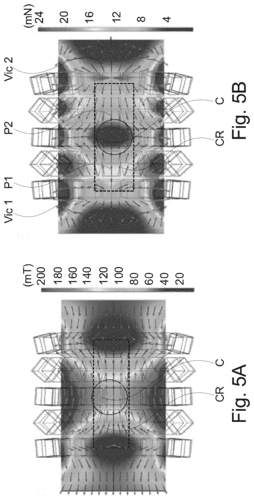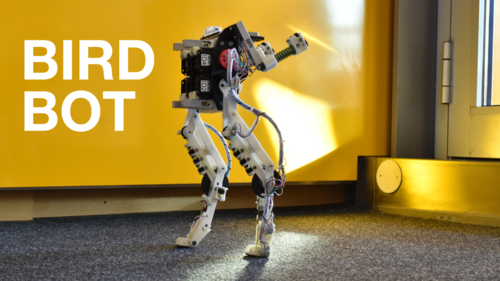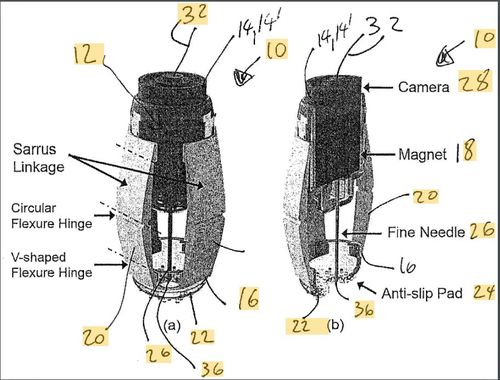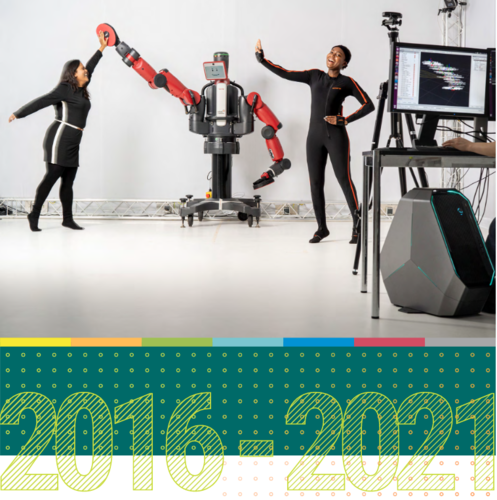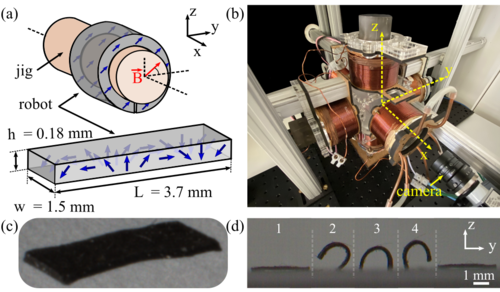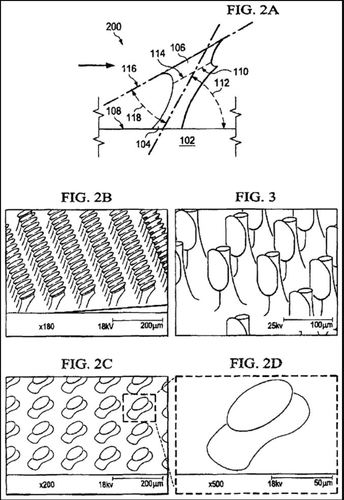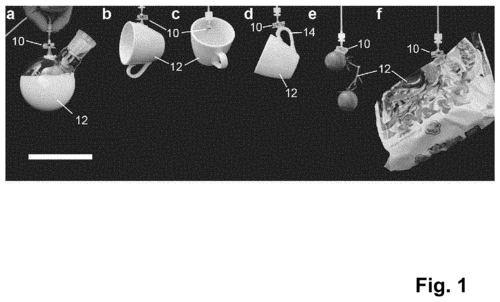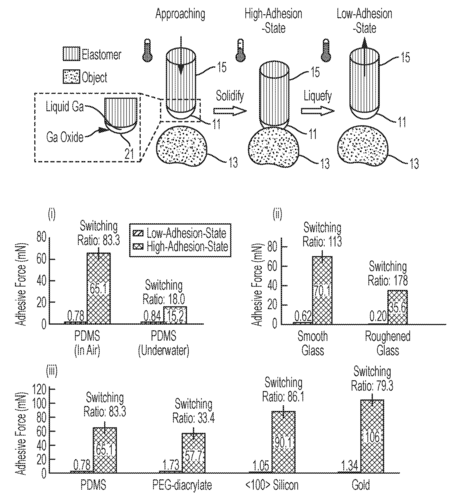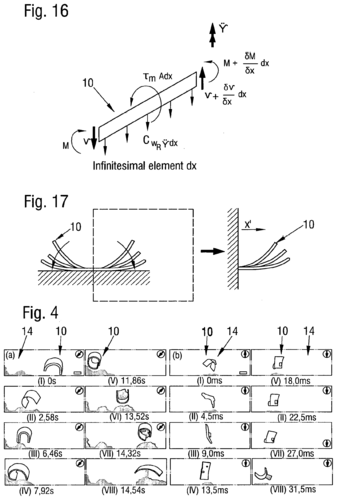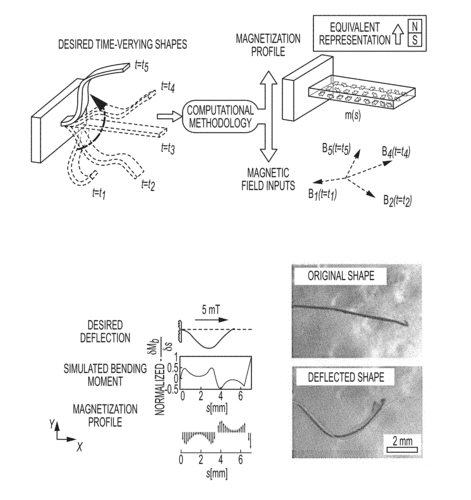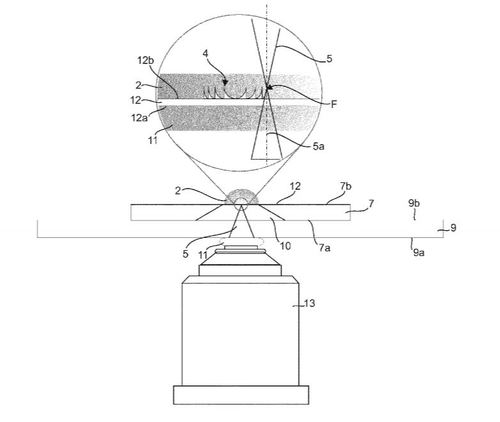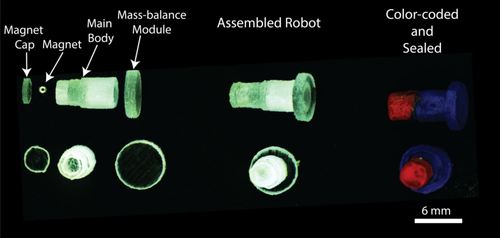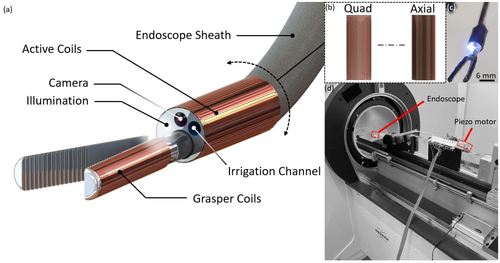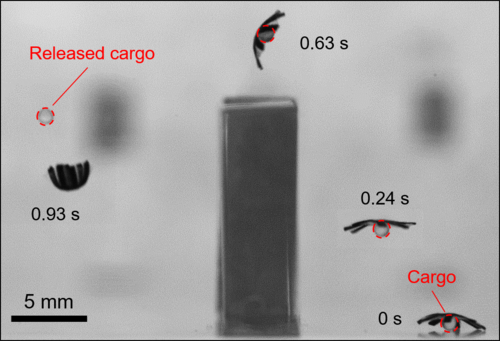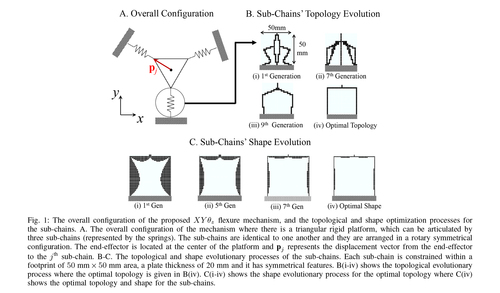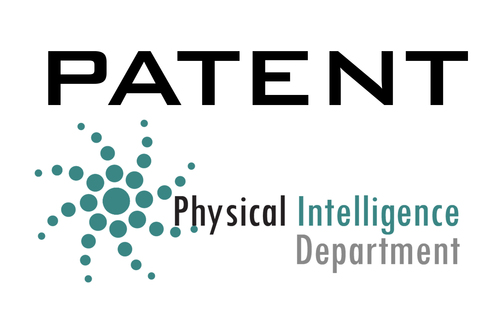Carrier, use of a carrier, method of activating a carrier and method of making a carrier
Microfibers with mushroom-shaped tips for optimal adhesion
Sitti, M., Aksak, B.
2023, US Patent 11,613,674 (patent)
Magnetic trap system and method of navigating a microscopic device
Son, D., Ugurlu, M., Bluemer, P., Sitti, M.
2023, US Patent App. 17/871,598 (patent)
A Liquid Repellent Fibrillar Dry Adhesive Material and a Method of Producing the Same
2022
DRY ADHESIVES AND METHODS FOR MAKING DRY ADHESIVES
Metin Sitti, Michael Murphy, Burak Aksak
December 2022, US Patent App. 17/895,334, 2022 (patent)
Data for BirdBot Achieves Energy-Efficient Gait with Minimal Control Using Avian-Inspired Leg Clutching
Badri-Spröwitz, A., Sarvestani, A. A., Sitti, M., Daley, M. A.
Edmond, March 2022 (techreport)
Optoacoustic Tracking and Magnetic Manipulation of Cell-Sized Microrobots in Mice
Wrede, P., Degtyaruk, O., Kalva, S. K., Deán-Ben, X. L., Bozuyuk, U., Aghakhani, A., Akolpoglu, B., Sitti, M., Razansky, D.
Clinical and Translational Biophotonics, pages: TTu4B-6, 2022 (conference)
Method of making one or more fibrils, computer implemented method of simulating an adhesive force of one or more fibrils and fibril
Heat assisted magnetic programming of soft materials
Light-triggered Drug Release from 3D-printed Magnetic Chitosan Microswimmers
Scientific Report 2016 - 2021
2020
Learning of sub-optimal gait controllers for magnetic walking soft millirobots
Culha, U., Demir, S. O., Trimpe, S., Sitti, M.
In Robotics: Science and Systems XVI, pages: P070, (Editors: Toussaint, Marc and Bicchi, Antonio and Hermans, Tucker), RSS Foundation, Robotics: Science and Systems 2020 (RSS 2020), 2020 (inproceedings)
Fibrillar structures to reduce viscous drag on aerodynamic and hydrodynamic wall surfaces
Castillo, L., Aksak, B., Sitti, M.
2020, US Patent 10,830,261 (patent)
Gripping apparatus and method of producing a gripping apparatus
Song, S., Sitti, M., Drotlef, D., Majidi, C.
Google Patents, February 2020, US Patent App. 16/610,209 (patent)
Method and device for reversibly attaching a phase changing metal to an object
Method of actuating a shape changeable member, shape changeable member and actuating system
Hu, W., Lum, G. Z., Mastrangeli, M., Sitti, M.
Google Patents, January 2020, US Patent App. 16/477,593 (patent)
Method of fabricating a shape-changeable magentic member, method of producing a shape changeable magnetic member and shape changeable magnetic member
Method for producing an XUV and X-ray diffractive optic
SANLI, U. T., Ceylan, H., Sitti, M., SCHÜTZ, G., Keskinbora, K.
2020, US Patent App. 16/979,121 (patent)
Towards 5-DoF control of an untethered magnetic millirobot via MRI gradient coils
Microfibers with mushroom-shaped tips for optimal adhesion
Sitti, M., Aksak, B.
2020, US Patent 10,689,549 (patent)
Design and Development of a Lorentz Force-Based MRI-Driven Neuroendoscope
Phelan III, M. F., Dogan, N. O., Lazovic, J., Sitti, M.
In 2022 IEEE/RSJ International Conference on Intelligent Robots and Systems (IROS), pages: 9534-9541, 2020 (inproceedings)
2019
Collective formation and cooperative function of a magnetic microrobotic swarm
A magnetically-actuated untethered jellyfish-inspired soft milliswimmer
(Best Paper Award)
Robotics: Science and Systems, June 2019 (conference)
Wide range-sensitive, bending-insensitive pressure detection and application to wearable healthcare device
Kim, S., Amjadi, M., Lee, T., Jeong, Y., Kwon, D., Kim, M. S., Kim, K., Kim, T., Oh, Y. S., Park, I.
In 2019 20th International Conference on Solid-State Sensors, Actuators and Microsystems & Eurosensors XXXIII (TRANSDUCERS & EUROSENSORS XXXIII), 2019 (inproceedings)
Method of assembling mobile micro-machines and a mobile micro-machine
Sitti, M., Yigit, M. B., Alapan, Y., Beker, O.
2019, International Application, Sep.2019, PCT/EP2019/075564 (patent)
Scientific Report 2016 - 2018
Printing-while-moving: a new paradigm for large-scale robotic 3D printing
Tiryaki, M. E., Zhang, X., Pham, Q.
2019 IEEE/RSJ International Conference on Intelligent Robots and Systems (IROS 2019), pages: 2286-2291 , IEEE, Piscataway, NJ, IEEE/RSJ International Conference on Intelligent Robots and Systems (IROS 2019), 2019 (conference)
A bio-inspired robotic fish fin with mechanosensation using conductive liquid-metal-infused soft actuators
Liu, Z., Sun, W., Ren, Z., Hu, K., Wang, T., Wen, L.
2019 IEEE 9th Annual International Conference on CYBER Technology in Automation, Control, and Intelligent Systems (CYBER 2019), pages: 689-694, IEEE, Piscataway, NJ, IEEE 9th Annual International Conference on CYBER Technology in Automation, Control, and Intelligent Systems (CYBER 2019) , 2019 (conference)
A liquid repellent fibrillar dry adhesive material and a method of producing the same
2018
Enhanced non-steady gliding performance of the MultiMo-Bat through optimal airfoil configuration and control strategy
Collectives of spinning mobile microrobots for navigation and object manipulation at the air-water interface
Wang, W., Kishore, V., Koens, L., Lauga, E., Sitti, M.
In 2018 IEEE/RSJ International Conference on Intelligent Robots and Systems (IROS), pages: 1-9, 2018 (inproceedings)
Endo-VMFuseNet: A deep visual-magnetic sensor fusion approach for endoscopic capsule robots
Turan, M., Almalioglu, Y., Gilbert, H. B., Sari, A. E., Soylu, U., Sitti, M.
In 2018 IEEE International Conference on Robotics and Automation (ICRA), pages: 1-7, 2018 (inproceedings)
Endosensorfusion: particle filtering-based multi-sensory data fusion with switching state-space model for endoscopic capsule robots
Turan, M., Almalioglu, Y., Gilbert, H., Araujo, H., Cemgil, T., Sitti, M.
In 2018 IEEE International Conference on Robotics and Automation (ICRA), pages: 1-8, 2018 (inproceedings)
2017
Swimming in low reynolds numbers using planar and helical flagellar waves
Khalil, I. S. M., Tabak, A. F., Seif, M. A., Klingner, A., Adel, B., Sitti, M.
In 2017 IEEE/RSJ International Conference on Intelligent Robots and Systems (IROS), pages: 1907-1912, International Conference on Intelligent Robots and Systems, September 2017 (inproceedings)
An XY θz flexure mechanism with optimal stiffness properties
Lum, G. Z., Pham, M. T., Teo, T. J., Yang, G., Yeo, S. H., Sitti, M.
In 2017 IEEE International Conference on Advanced Intelligent Mechatronics (AIM), pages: 1103-1110, July 2017 (inproceedings)
Positioning of drug carriers using permanent magnet-based robotic system in three-dimensional space
Khalil, I. S. M., Alfar, A., Tabak, A. F., Klingner, A., Stramigioli, S., Sitti, M.
In 2017 IEEE International Conference on Advanced Intelligent Mechatronics (AIM), pages: 1117-1122, July 2017 (inproceedings)
Self-assembly of micro/nanosystems across scales and interfaces
Dynamic analysis on hexapedal water-running robot with compliant joints
Kim, H., Liu, Y., Jeong, K., Sitti, M., Seo, T.
In 2017 14th International Conference on Ubiquitous Robots and Ambient Intelligence (URAI), pages: 250-251, June 2017 (inproceedings)
Design and actuation of a magnetic millirobot under a constant unidirectional magnetic field
Erin, O., Giltinan, J., Tsai, L., Sitti, M.
In 2017 IEEE International Conference on Robotics and Automation (ICRA), 2017 IEEE International Conference on Robotics and Automation (ICRA), pages: 3404-3410, IEEE, Piscataway, NJ, USA, IEEE International Conference on Robotics and Automation (ICRA), May 2017 (inproceedings)
Magnetically actuated soft capsule endoscope for fine-needle aspiration biopsy
Son, D., Dogan, M. D., Sitti, M.
In Proceedings 2017 IEEE International Conference on Robotics and Automation (ICRA), pages: 1132-1139, IEEE, Piscataway, NJ, USA, 2017 IEEE International Conference on Robotics and Automation (ICRA), May 2017 (inproceedings)
Method of molding simple or complex micro and/or nanopatterned features on both planar or non-planar molded objects and surfaces and the molded objects produced using same
Sitti, M., Glass, P. S., Aksak, B.
2017, US Patent 9,566,722 (patent)


